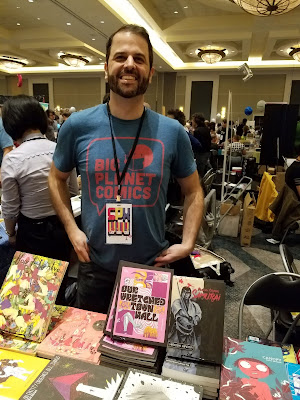Friends Don't Let Friends Do Slipcases On Kickstarters Says Liam Sharp
Last year, comic book creator, publisher and novelist Liam Sharp launches a Kickstarter for The Art Of Liam Sharp Encore Bronze.
06 Aug 2023
George Bernard Shaw Sent Lawyers After DC Comics About Superman
This internal document from 1939 shows how the publisher confronted the first legal threat against Superman, from George Bernard Shaw.
Published Sun, 06 Aug 2023 12:57:08 -0500
https://bleedingcool.com/comics/george-bernard-shaw-sent-lawyers-after-dc-comics-about-superman/
Maxwell Charles Gaines – The Man Who Rejected Superman In 1936
In 1936, co-publisher of All-American Publications, Maxwell Charles Gaines wrote to Jerry Siegel rejecting Superman., returning all meterials.
Published Sat, 05 Aug 2023
by Rich Johnston
https://bleedingcool.com/comics/maxwell-charles-gaines-the-man-who-rejected-superman-in-1936/
When Superman Editor Hannah Baker Called Joe Shuster's Art Careless
The Superman newspaper strip's editor Hannah Baker also sent the following letter to Jerry Siegel on the 20th of April, 1939...
06 Aug 2023
https://bleedingcool.com/comics/superman-editor-hannah-baker-called-joe-shuster-art-careless/
Sage Stossel Winner of 2023 NSNC Award, McConnell & Lander Nab Honorable Mention
INTERVIEW: Graham Annable lets your mind fill in the horrific gaps in EERIE TALES FROM THE SCHOOL OF SCREAMS
Ricardo Serrano Denis
08/07/2023
https://www.comicsbeat.com/graham-annable-eerie-tales-from-the-school-of-screams-interview/
The Uncertain Death of Heavy Metal Magazine
A look at what looks like the demise of Heavy Metal magazine, and the strange road that led to this
By RM Rhodes
08/07/2023
https://www.comicsbeat.com/the-uncertain-death-of-heavy-metal-magazine/
A perfect Sunday with... Charles Soule
Peach pie, reading as many books as (super)humanly possible and hitting the pavement!
Cavan Scott
Cavletter Aug 6, 2023
https://cavanscott.substack.com/p/a-perfect-sunday-with-charles-soule
Aug 7 2023
IDEAS DON'T BLEED episode forty-seven | Ben Percy, part one
Matthew Rosenberg, Ethan S. Parker, and Griffin Sheridan
https://ashcanpress.substack.com/p/im-saved
S&S to Distribute Image Comics
Aug 04, 2023
https://www.publishersweekly.com/pw/newsbrief/index.html?record=4299
The Violent Delights of "Harley Quinn"
Amid a sea of grim, self-serious adaptations, the buoyant Max series offers an antidote to superhero fatigue.
Published in the print edition of the August 14, 2023, issue, with the headline "Why So Serious?."
https://www.newyorker.com/magazine/2023/08/14/harley-quinn-tv-review-max
By Inkoo Kang
August 7, 2023
INTERVIEW: SHANNON HALE chats about creating the BEST FRIENDS audiobook
Deanna Destito
08/07/2023
https://www.comicsbeat.com/interview-shannon-hale-chats-about-creating-the-best-friends-audiobook/
Meet Hank Kanalz
The longtime comics executive talks about his publishing & operations focus, plus much more!
3 Worlds / 3 Moons
Aug 7, 2023
https://3w3m.substack.com/p/dispatch-meet-hank-kanalz
Marvel Studios VFX Workers File to Join IATSE Union
Around 50 workers signed authorization cards indicating they wished to be represented by the union.
Borys Kit
August 7, 2023
https://www.hollywoodreporter.com/movies/movie-news/marvel-studios-vfx-workers-union-1235558210/
The Quiet Giant: On Comics and Libraries, and What's Driving the Growth of this Potent Combination
By David Harper
September 10, 2019
https://sktchd.com/longform/the-quiet-giant/
What Mutant Mayhem gets right about TMNT
The new Teenage Mutant Ninja Turtles movie proves once again that taking creative risks can pay off big time
Cindy White
AV Club August 7 2023
https://www.avclub.com/what-mutant-mayhem-gets-right-about-tmnt-1850709818
"I Just Wanna Keep Doing This": Jay Hosler on 20 Years of YA Comics
Chris Mautner | August 7, 2023
https://www.tcj.com/i-just-wanna-keep-doing-this-jay-hosler-on-20-years-of-ya-comics/
European Comics and Graphic Novels in English
2016-04-05
Euro-comics - English translations
GUIDE TO EUROPEAN GRAPHIC NOVELS AVAILABLE IN ENGLISH
Kimmo Lakoma
2018-01-07














































